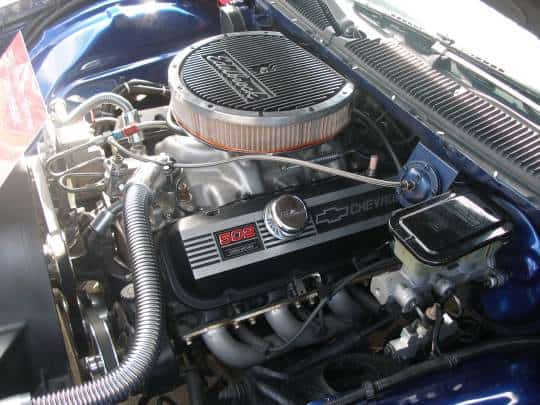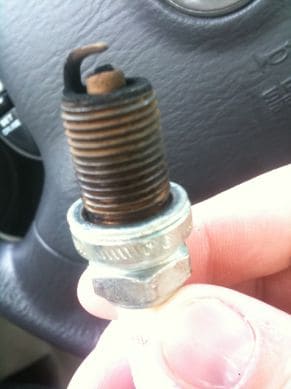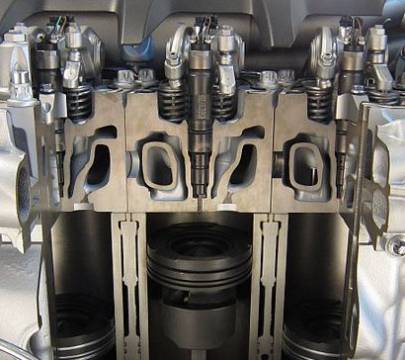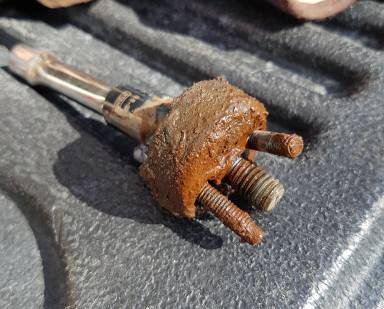It can be pretty frustrating if your vehicle bogs when you hit the acceleration, especially when you’re in a rush. Moreover, this bogging could be quite dangerous if you hit the acceleration while entering or exiting the highway from an off-ramp and the vehicle bogs. It is quite troublesome and also a pretty common problem and you can troubleshoot it on your own.
The common reasons why you might be facing this problem could be a leak in the vacuum line, worn-out spark plugs, fuel pressure problems, etc. Besides, it could also be due to a faulty ignition system or some malfunctioning sensors. Read on to find out why your Chevy 350 TBI might be bogging and how to fix it.
Table of Contents
Top 6 Reasons Why Your Chevy 350 TBI Bogs On Acceleration

#1. Leaking Vacuum Lines
A vacuum leak results in supplying the wrong air/fuel ratio into the engine, thus, resulting in bogging or rough and slow acceleration. Some other symptoms to look out for to ensure that the problem is indeed a vacuum leak are hissing sound from the engine bay, stalling while stopping, etc.
Solution
- Vacuum leaks could lead to your Chevy 350 TBI bogging.
- Carefully inspect for leaks or broken vacuum lines.
- If found, ensure they are promptly fixed.
- For detailed guidance, refer to our specific blog post on finding and fixing vacuum leaks.
Solution: 1. Check for leaks in the vacuum lines. There might be one or more snapped vacuum lines that you need to fix. Here’s a blog to help you find and fix a vacuum leak in your Chevy 350 TBI.
#2. Worn Out Spark Plugs

Mostly, bogging is caused due to worn-out spark plugs, especially if you have a habit of revving your car a lot. Even, if you don’t rev your engine too much, still the spark plugs can malfunction, especially, if you had changed them long ago.
Solution
- Spark plugs can wear out over time, affecting the vehicle’s performance.
- If it’s been a long time since their last replacement, consider changing them.
Solution: Try changing your car’s spark plugs. You need to change them every once in a while. If you had replaced the plugs long ago or can’t even remember, you should definitely change them.
They come cheap and are easy to replace on your own. This video will guide you throughout the spark plugs replacement procedure:
#3. Faulty Fuel Pressure
There is a good chance that your Chevy 350 TBI is bogging due to a lack of fuel. The filter screens in the fuel tank can gradually get gummed up. Moreover, the fuel pumps have a limited lifetime. Check the fuel pressure to verify if the TBI is indeed going out of fuel. Often, the fuel pumps and fuel pressure regulators can go bad.
Also, if you drive a lot in the dirt, then the chance of the fuel filters and screens getting clogged is more. You should have your fuel filters replaced every once in a while. Besides, they are not that costly too and cheaper than replacing your fuel pump.

Solution
- The Chevy 350 TBI is designed without a dedicated port for fuel pressure testing.
- To measure fuel pressure, you’ll have to incorporate fittings to integrate a pressure gauge.
- A fuel pressure reading within the range of 9 to 13 PSI indicates that both the regulator and fuel pump are functioning properly.
Solution: The Chevy 350 TBI doesn’t have a fuel pressure test port. So, you need to test it with fittings to tee in the pressure gauge. Now, if the fuel pressure specification is in the range of 9 to 13 PSI, both your fuel pump and regulator are working fine.
If not and if the pressure is low, the reason behind this could be either the fuel pump or the regulator. A dirty filter might also be the cause. Try stopping the flow in the return line for some time to check if the low pressure is caused by the regulator.
If the fuel pressure is higher, there might be a restriction in the return line. Your fuel pressure regulator could be bad as well and leak into the intake. Remove the vacuum line off the regulator and if gas is coming out, it is leaking and getting sucked into the engine. So, you can check your car’s fuel pressure.
Else, you need to take it to a mechanic’s shop and have it checked.
#4 Ignition System
Sometimes, the ignition system might be faulty as well. For example, if the spark plugs, rotors, or other wires have issues with them, then your engine might not receive sufficient power to run the vehicle at times. This results in bogging when you accelerate the vehicle.
Solution
- Conduct a thorough check of the base timing of your vehicle.
- Disconnect the EST bypass connector, typically located next to the fuel pump relay on the left side of the engine firewall.
- This connector is characterized by a brown wire accompanied by a black stripe.
Solution: Check the base timing of your car and unplug the EST bypass connector (located beside the fuel pump relay towards the left of the firewall engine). It is supposed to have a brown wire with a black line and a connector.
Once it is unplugged, check your timing with a timing light. Generally, a 0 degrees base timing is recommended, but you can add a bit more timing as per your requirement. Now, plug the EST connector back in and check if the bogging problem is gone or not. You can also time your engine without the timing light.
Check the distributor system and the rotors too. Moreover, the ignition module could be bad as well. If the ignition wires are faulty, inspect and replace them.
#5. Sensor Problem
Check the knock sensor of the Chevy 350 TBI. Sometimes, it can send false signals that cause the computer to retard your timing. Also, check out the other sensors like the 02 sensor that controls the fuel management of ECM. The MAP sensor too can be the reason behind if it doesn’t pick readings correctly under light accelerations.

Solution
- Using a voltmeter, take readings from the ECM at various sensors.
- Alternatively, use a connector to link the vehicle to a laptop to monitor ECM readings.
- If you identify a faulty sensor, it needs to be replaced to restore your vehicle’s performance.
Solution: Take a voltmeter and start taking readings of the ECM from different sensors. You can also get a connector and hook up the vehicle to a laptop to check what the ECM is reading from the different sensors. You will have to replace the bad sensor to have your vehicle up and running. Check out this video tutorial to know how to:
#6. Air Filter Issues
Problems with your Chevy 350 TBI’s air filter might result in bogging during acceleration. The role of the air filter is to prevent pollutants like dust and dirt from entering the engine. Over time, these elements may clog the filter, leading to limited airflow into the engine. This can cause a lean fuel-air mixture, making your Chevy 350 TBI bog during acceleration.
Solution
- Regularly check the air filter for dirt build-up or any damage.
- If it’s dirty but still serviceable, clean the filter.
- Use a soft brush to efficiently remove loose debris and dust.
- Consider replacing the filter if it’s overly dirty or damaged.
Frequently Asked Questions
Why does my Chevy 350 engine bog when I hit the gas?
If your Chevy 350 engine bogs down when you hit the gas, it could indicate a fuel supply problem. This can stem from a clogged fuel filter, faulty fuel pump, or a malfunctioning carburetor. It’s important to consult a mechanic to diagnose this issue.
How much fuel pressure should a TBI 350 have?
The appropriate fuel pressure for a Throttle Body Injection (TBI) 350 typically falls between 9 to 13 psi. This pressure level is vital for the engine’s efficiency and performance. If you suspect issues with your fuel pressure, use a fuel pressure gauge or consult a professional.
How much HP does a TBI 350 make?
The standard TBI 350 engine typically generates a horsepower rating of 210 to 255. Keep in mind, this range can differ based on your specific model and any performance modifications added. However, any modification to boost performance should be carried out by a professional to safeguard your engine’s longevity.
What is the difference between a 350 TBI and Vortec?
350 TBI and Vortec engines differ primarily in their fuel delivery systems. The 350 TBI utilizes a Throttle Body Injection system for fuel delivery, while the Vortec employs a Multiport Fuel Injection system. This makes for more accurate fuel delivery and enhanced performance in the Vortec.
What is the advantage of a TBI system?
A TBI, or Throttle Body Injection, system has several advantages over other types of fuel injection systems. These include easier maintenance and lower costs. Moreover, compared to carbureted systems, TBI systems provide better fuel distribution, which can lead to increased fuel efficiency and improved engine performance.
Wrapping Up
We know how helpless you can feel when your engine bogs on accelerating. Instead of going faster, the speed of your vehicle reduces and it may stall a little as well. There could be several reasons why you might be facing this problem and in this article, we have shed some light on some of them. Hopefully, after going through each of those and trying them out one by one, you would be able to get rid of your Chevy 350 TBI’s bogging on acceleration problem.
